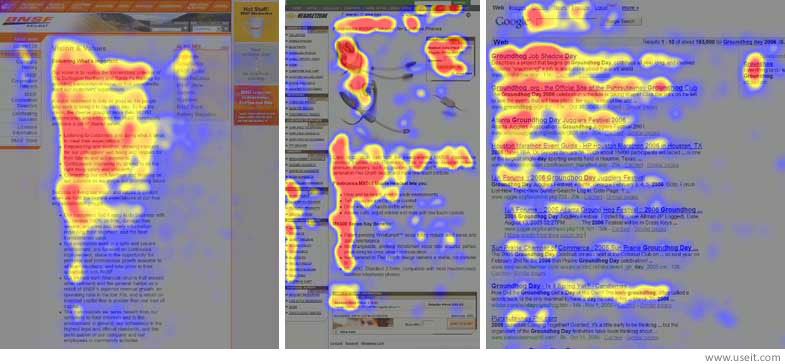
Eye tracking studies are all the rage today, in part because of the increasing sophistication of the technology involved. A few years ago, eye tracking was cumbersome and annoying. Subjects had to insert clear contact lenses, with wires spiraling out of them, and struggle to interact with documentation “normally� while the test was taking place. I don’t know about you, but I find it hard to behave “normally� with spiral wires hanging out of my eyes.
But recent advances in technology have allowed eye tracking systems to be priced within the reach of almost any commercial enterprise. If you are a technical communicator (or information designer, user experience developer, etc., etc.), chances are that within the next five years, eye tracking studies will become part of your regular routine.
With that in mind, it pays to be cautious. Eye tracking studies can be useful, but it’s tempting to draw conclusions that aren’t valid. One of the biggest mistakes people make is confusing fixation and attention. Just because your studies reveal that a subject’s eyes are drawn to a specific spot on the page, it doesn’t mean that the person is actually processing (or will retain) what he is looking at!
The human eye can take in quite a bit of different information at once. However, the brain can only process one “visual scene� at a time. Don’t believe me? Consider the following example.
Below is a link to a movie. Don’t open it yet. The movie shows six people passing basketballs around. One group of three is wearing black, the other group of three is wearing white. When you watch the movie, your instructions are to count the number of chest passes and bounce passes that the WHITE team makes. Do nothing else. If you see four chest passes and two bounce passes, then your answer would be “4� and “2.�
Got it? When you’re comfortable with the instructions above, click the link below and watch the movie. Then return here and click Read the Rest of this Entry to determine what your results mean.
Watch Movie(7mb movie, wait for it to load and click Play)
Continue reading ‘Fixation vs. attention’

 < - Home
< - Home




